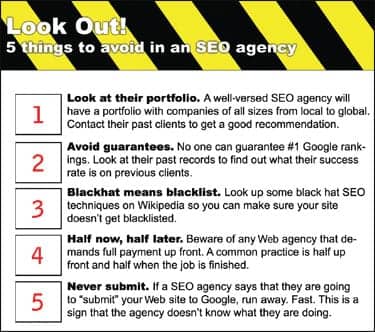Five things you should know about search engine optimization

|

|
| Steven Ayres is the president of Internet marketing firm, Rocket 55, Minneapolis, and was formerly the marketing manager of a prominent earmold laboratory. Nathan Smith is the Internet marketing specialist at Rocket 55 (www.rocket55.com). | |
The Internet is becoming more popular with each passing day. While every industry is starting to see diminishing returns from traditional print marketing—from Yellow Pages and newspaper advertising to direct mail—revenue from Internet advertising continues to increase.
In fact, aging Americans are also starting to use the Internet on a more regular basis. A survey conducted by Pew Research1 in December 2008 shows that 41% of adults ages 65+ use the Internet. This number increases to 72% for ages 50 to 65.
As the generation paradigm shifts, the Internet plays a larger role in the marketing of dispensing offices/practices. The bottom line is, if a hearing care business is going to thrive today, it is paramount that they have a good-looking properly functioning Web site.
And yet, even that isn’t enough. After all, what good is a Web site if no one can find it?
Just because you have a great home page, don’t think this guarantees you a connection with the burgeoning online consumer population. It is no longer enough just to “have a Web site”; your Web site needs to be streamlined and built correctly to utilize its full value.
Location, Location, Location
You’ve probably heard of the advertising phrase “Location, location, location.” Well, it’s absolutely no different when applied to Internet marketing. Think about it: where do you want your hearing clinic to be? Chances are you want it to be someplace where there is a lot of traffic, like on a downtown Main Street or at a highway intersection. Maybe you’ll put up a sign so people can easily see and find your clinic. Now take this philosophy and apply it to the Internet.
What drives the most traffic on the Internet? Search engines like Google, Yahoo, and MSN. These are the big hitters—the interstates of Internet. Together they funnel a vast majority of all Internet traffic. If your Web site doesn’t show up on page 1 of the search engine results page, your chances of being found by your customers are less than 2%. That’s a lot of potential customers lost just because no one can find your Web site.
SEO. This is where search engine optimization (SEO) comes in. SEO is a method of increasing the amount and the value of traffic a Web site receives via search engines and their results. By ranking higher on a search engine—otherwise known as having a high page rank—a Web site will receive more visitors based on specific typed-in keywords.
By optimizing your site for search engines such as Google or Yahoo, your company will be found easier and receive increased exposure, which should lead to increases in sales and revenue. SEO provides a service that has a relatively low cost with high return-on-investment (ROI) when compared to many other marketing mediums.
The disconnect. The only problem is, most Web designers aren’t familiar with the correct practices of SEO. Many designers come from an art background or perhaps have highly technical IT training. In many cases, they can make a pretty Web site or program a custom application for the site, but more often than not, they don’t understand the value of or how to implement online marketing strategies such as SEO. Likewise, many of our industry’s sites are written or directed by audiologists and hearing instrument specialists who generally have limited exposure to SEO concepts.
There are many subtleties within SEO campaigns, and it is impossible to go over them all within the scope of this article. However, the following are five essential things you should discuss with your Web designer. Make sure they understand the importance of SEO and what it can do to help your hearing care business.

|
| FIGURE 1. Things to keep in mind when hiring an SEO agency. |
1. Know (and Use!) Your Keywords
Keyword research is the bread and butter of all SEO campaigns. Without the proper keywords and target analysis, all SEO attempts will be for naught. For example, about a quarter-million people every month are searching the term “hearing aids.” Now you might be thinking, “Wow, that’s a lot of people; I should try to rank for that and get a lot of traffic!” And yes, if you managed to rank for hearing aids, your Web site would receive an astronomical amount of traffic.
But first, such a general goal and keyword is prohibitively competitive, meaning that hundreds of other business (including networks and manufacturers) are casting this same net and spending plenty of money for the privilege. Second, your conversion rate would be incredibly low. It matters little to you if someone from New Jersey clicks on your site when you are dispensing hearing aids in Minnesota.
Thinking local for SEO. Remember our previous discussion: Location, location, location. Market to an audience you can actually serve. If you are based in Minneapolis, use keywords like “Minneapolis hearing test” or “Twin Cities hearing screening.” If you are facing a lot of competition within your local market and you have something that distinguishes your office/practice from others, populate your Web site with these specific keywords and phrases.
2. Content Is King
After your designer or SEO firm has done the necessary keyword research, it’s on to creating relevant, high-quality content that is rich with keywords. Basically, you want the text on your Web site to capture the potential customer’s attention and keep it there. At the same time, you want to implement your keywords into the content. This can be tricky to do without interrupting the content’s natural flow. The last thing you want is for someone to stumble over your content because of bad keyword placement.
Every page on your site should have content. If there is no relevant keyword-rich text on a page, it renders that page practically useless with regard to search engines and thus it hurts your Web site’s page rank. Remember content is what the customers are looking for; without good content, there is no reason for them to stay at your site.
3. Metadata and Title Tags
The next step is to implement the keywords into what is called “metadata.” Metadata includes things such as: title tags, description tags, alt tags, etc. More often than not, you probably won’t even realize the metadata is there. It works behind the scenes, only popping up when necessary. However, search engines place a lot of weight on all of these metadata categories.
Title tags are by far the most important piece of metadata. You can see title tags on Web sites at the very top of your Web browser. Many sites merely have “Home,” their company name, or nothing at all in their title tags. This is a huge mistake. The title tag should be relevant to what is on the page, but it should also be very keyword rich. Search engines read title tags before anything else, and because of this, they become extremely important when Google or Yahoo is considering Web site rankings.
4. Build Your Links
This is probably the most complicated and difficult of all SEO practices. Link building is the process of finding and producing relevant sources that will link back to your Web site. The more popular the Web site, the more “linking power” it has and the more it will help your Web site rank. Link-building generates traffic via visitors clicking on outside links while also helping you increase your own page rank by having a Web site with a lot of clout vouch for you.
There are many types of link-building strategies, from reciprocal links, to blog posts, to online press releases and articles. Each link-building campaign must be undertaken individually, because what works for one company may or may not work for another.
Make sure that your designer is familiar with “black hat” SEO techniques such as “link farms” and “spamdexing.” And make sure, at all costs, that they do not use them (eg, black hat link building will eventually get your Web site blacklisted by the major search engines).
5. Keep It Fresh with a Blog
In addition to having good original content for your Web site, it is also important to make sure your site maintains relevant content from day to day or week to week. New, fresh content not only illustrates to your customers that you are on top of your game and know your field, but search engines give points to sites that are constantly updated with relevant information.
The easiest way to keep your current content updated is with a blog. In addition to the benefits of constant updating, it also gives your company a more human face. Blogs allow your practice to interact with people via comments and help you and your staffers bond with customers on a more personal level. Just remember that it is important to have an internal blog implemented into your Web site and not an outside blog that points back to your site. Unlike an external blog, an internal blog provides the benefits of constantly updating the content on your Web site. Therefore, it is much more effective for SEO purposes if the blog is part of your Web site.
The Work Ahead
These are just a few of the things that your Web designer should understand and talk to you about. There are many more techniques and nuances of SEO, but taking these five categories into consideration will help you form a strong foundation for driving more traffic to your Web site.
If you are serious about having a strong online presence for the ever-growing online consumers, it may be time that you sat down with a Web designer or SEO firm to go over the finer details of what SEO can do for your hearing clinic. Just remember, “Location, location, location.”
Reference
- Pew Research. Demographics of Internet Users. Pew Internet & American Life Project; November 19-December 20, 2008.
Correspondence can be addressed to HR at [email protected] or Steven Ayres at or (612) 418-2787.
Citation for this article:
Ayres S, Smith N. Location, location, location: SEO and your business. Hearing Review. 2009:16(6):28-30.





